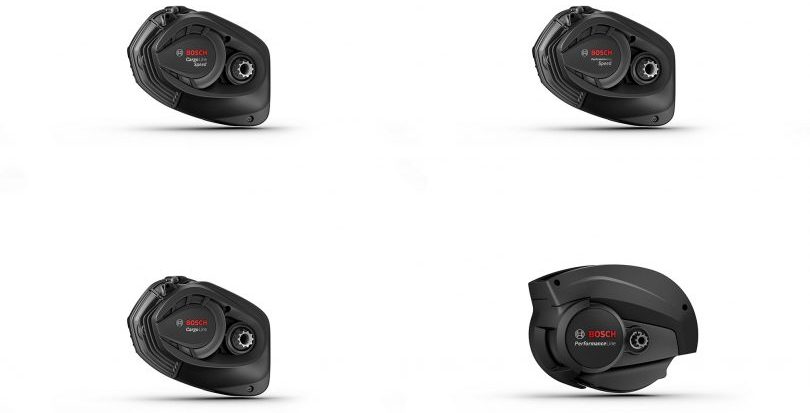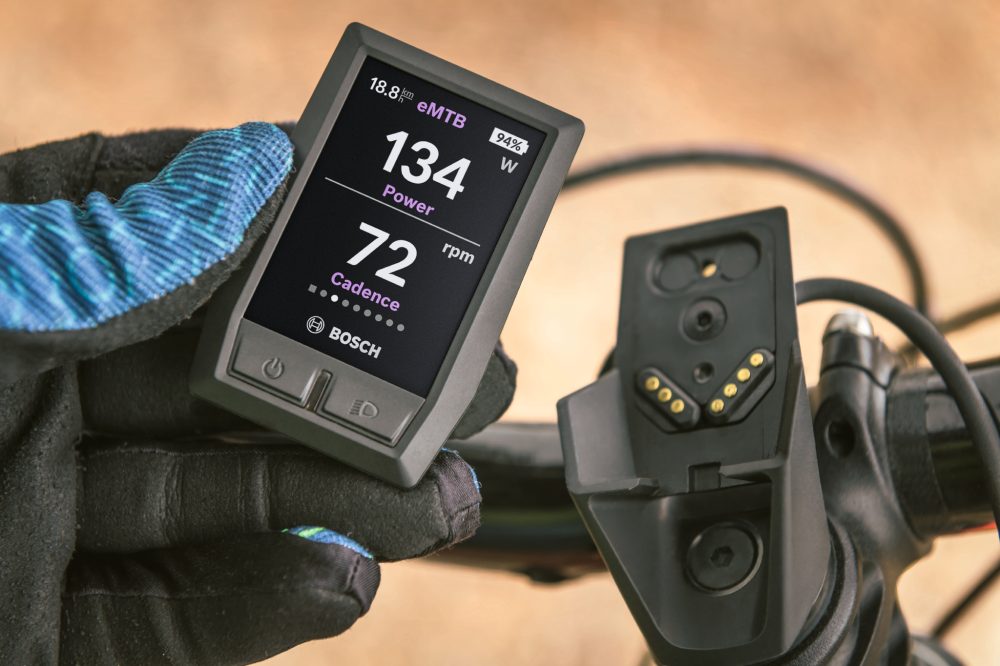Bosch’s electric bicycle motors and batteries have been leading the market for years without seeing many significant advancements. Now the company is hoping to change that with the release of its new line of upgraded motors and batteries.
Bosch’s new 2020 motors and batteries
We first covered leaks of Bosch’s 2020 motor and battery refresh last month.
It turns out we were correct, as Bosch’s new lineup includes the previously spied new motor casings and larger batteries. And now we are getting a better look at what Bosch has to offer in its first major hardware update in years.
Bosch’s previous motors were divided into two main classes: the smaller and quieter Active Line and the larger, more powerful but louder Performance Line. For 2020, the majority of the Performance line will be mounted in a smaller case similar to the current Active Line. It will feature an adequate 65 Nm of torque and offer a 300% pedal assist boost.
There are also two special variations of the Performance Line motors: Bosch Performance Line CX and Bosch Performance Line Speed.
Both are getting their own new magnesium casing to shave off weight. Both will also offer larger chainrings. The Bosch Performance Line Speed will have a higher top speed of 28 mph (45 km/h). That’s an increase over the 20 mph (32 km/h) limit on most of the other Bosch motors in the US. In Europe, the other motors have a lower top speed of 15 mph (25 km/h).

Bosch also showed off a new Cargo Line of motors designed for electric cargo bikes. The motor is available in its standard form or as a Cargo Line Speed model, which increases the speed to 28 mph (45 km/h).
Bosch’s Powertube batteries also received an update. The previous models maxed out at 500 Wh, but now the batteries have been increased to 625 Wh. The company will also offer a 400 Wh battery in the same 625 Wh case. That’s likely a nod towards affordability and could make the notoriously expensive Bosch system a bit more palatable to price-sensitive riders.

Updates to the display line
The Bosch Kiox display is also getting an upgrade. The company says that it will be able to wirelessly communicate with a specific Fox shock absorber to dynamically adjust shock performance. The feature isn’t available yet though, and Bosch didn’t have any demos available during its unveiling in Germany.
The Kiox display will also offer a new motor lockout feature where the motor is made inoperable when the magnetically attached display is removed. That allows riders to disable their bike’s motor as an anti-theft feature while the bike is parked in public. However, Bosch is requiring riders to pay an additional fee to access the software lockout feature.

Electrek’s Take
It’s great to see Bosch coming out with a new line of products. There haven’t been any substantial hardware updates in years, with the exception of the Kiox display’s unveiling nearly a year ago. I’ve still never seen that display on a bike in the wild, and have only experienced it on a demo bike at the company’s booth at the Interbike 2018 trade show.
The update to the motor and battery line is welcome, though I’m a bit underwhelmed. It feels like Bosch is playing catch up with other large manufacturers. Specialized has had 600+ Wh in-tube batteries for years and even unveiled 700 Wh in-tube batteries last year.
Brose’s own magnesium mid-drive motor is not only a year more advanced than Bosch’s, but it is significantly more powerful too. And it uses belts instead of gears, making it whisper quiet.
Shimano’s mid-drives and displays are competitive with Bosch’s new 2020 models, but were unveiled in mid-2018.
Yamaha’s PW series of mid-drive motors offer more torque than Bosch’s and have also been on the market for some time now.
Then there is the Chinese standout Bafang which we are seeing on more and more lust-worthy ebikes. The Ultra mid-drive is a chain-melting 1.5 kW.
Basically what I’m saying is this: Bosch’s new 2020 updates are quite nice and it is great to see them fighting to maintain their large market share, but these products are either comparable or behind offerings from nearly every other major competitor. Plus Bosch components are the most expensive option out there by a significant margin. Even bikes known for their affordability, such as Schwinn models, suddenly cost over $3,500 or more with a Bosch setup. And yet Bosch somehow still holds the lion’s share of the retail e-bike component market.
I’m not quite sure why that is. Perhaps because Bosch is a huge company, they can afford the marketing and production capacity required to shore up market share. Perhaps as an early entry into the field, they have simply become a legacy brand and are relying on the network effect to keep retailers coming back to Bosch parts around which companies have already invested in building frames. Whatever it is, it absolutely working for them. The company continues to grow its market share, even while its product offerings are slow to match that pace.
The next few years will be very interesting in the e-bike industry, that’s for sure.
Source: https://electrek.co/2019/06/18/bosch-unveils-2020-motor-battery-upgrade/
If you have more questions, please contact me with: kevin@newarebattery.com
Comments are closed.









